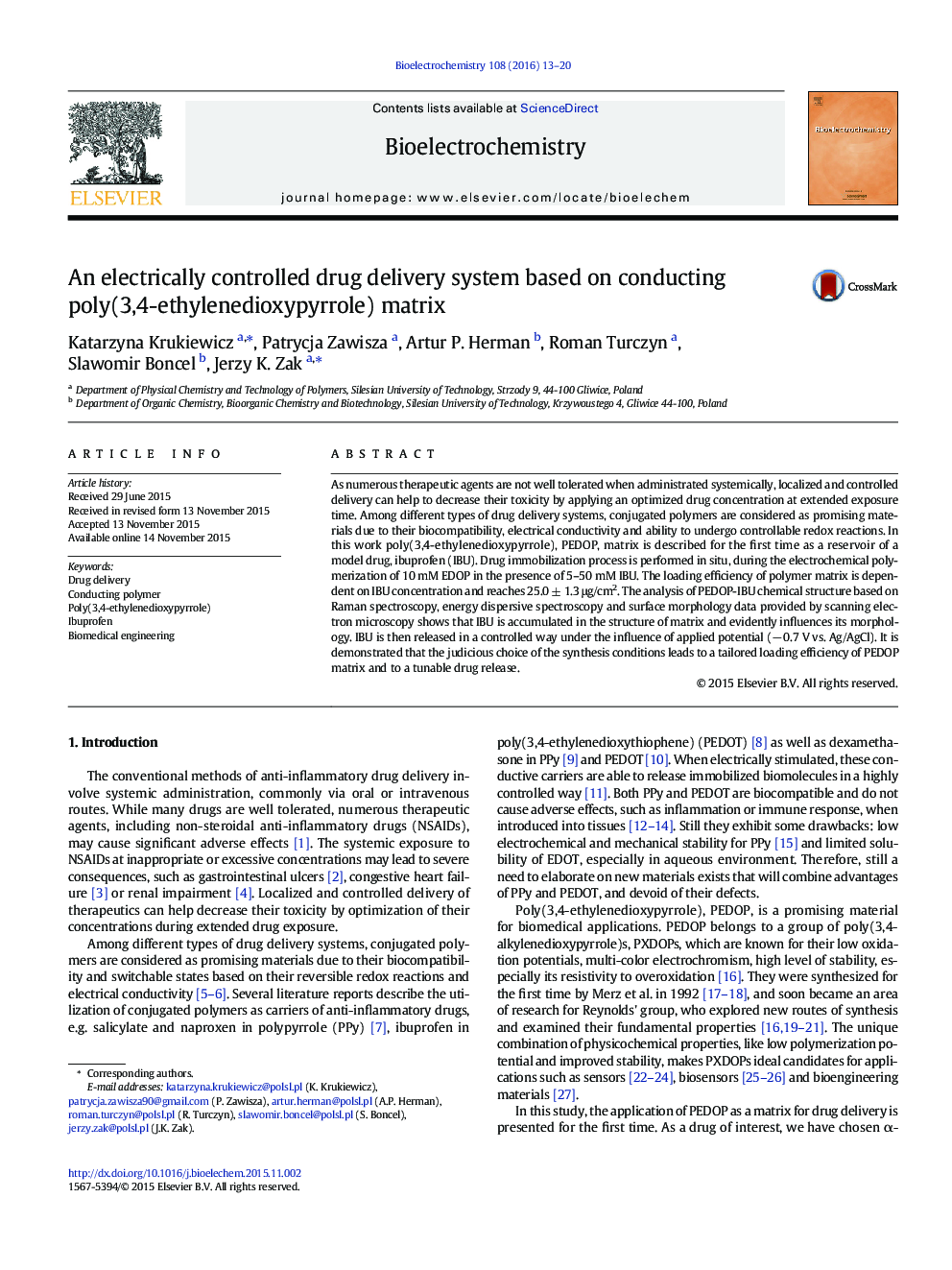| Article ID | Journal | Published Year | Pages | File Type |
|---|---|---|---|---|
| 1273775 | Bioelectrochemistry | 2016 | 8 Pages |
•Poly(3,4-ethylenedioxypyrrole) is used for the first time as drug delivery platform.•Modification of synthesis conditions leads to a tailored loading efficiency of PEDOP.•IBU is accumulated in the structure of PEDOP and influences its morphology.•The drug is released in a controlled way under the influence of applied potential.
As numerous therapeutic agents are not well tolerated when administrated systemically, localized and controlled delivery can help to decrease their toxicity by applying an optimized drug concentration at extended exposure time. Among different types of drug delivery systems, conjugated polymers are considered as promising materials due to their biocompatibility, electrical conductivity and ability to undergo controllable redox reactions. In this work poly(3,4-ethylenedioxypyrrole), PEDOP, matrix is described for the first time as a reservoir of a model drug, ibuprofen (IBU). Drug immobilization process is performed in situ, during the electrochemical polymerization of 10 mM EDOP in the presence of 5–50 mM IBU. The loading efficiency of polymer matrix is dependent on IBU concentration and reaches 25.0 ± 1.3 μg/cm2. The analysis of PEDOP-IBU chemical structure based on Raman spectroscopy, energy dispersive spectroscopy and surface morphology data provided by scanning electron microscopy shows that IBU is accumulated in the structure of matrix and evidently influences its morphology. IBU is then released in a controlled way under the influence of applied potential (− 0.7 V vs. Ag/AgCl). It is demonstrated that the judicious choice of the synthesis conditions leads to a tailored loading efficiency of PEDOP matrix and to a tunable drug release.
